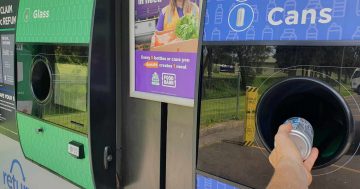Richard Eisenberg* says online personal finance apps and websites are leaving older people out in the cold through design choices placing them at a disadvantage during the COVID-19 pandemic and beyond.
 There’s something curious about mobile and online personal finance apps and websites, sometimes called fintech.
There’s something curious about mobile and online personal finance apps and websites, sometimes called fintech.
They’re not used much by people over 50, especially low-to-moderate income older adults.
What I’d tell my fellow 50-plusers: It’s not you, it’s them — the fintech designers and marketers.
“Online banking has never been more important than it is now for older adults,” Linda Peters, director of Older Adult Programs at the Northwest Side Housing Center in Chicago, said in a digital empowerment presentation at the recent National Council on Aging (NCOA) virtual Age & Action conference. And yet, she added, there has been a “huge digital divide between older adults and banking.”
Thomas Kamber, executive director of Older Adults Technology Services (OATS) in the US, said the pandemic is “definitely pushing some people who were previously reluctant adopters to adopt” online banking.
But as the US nonprofit Financial Health Network’s Fintech Over 50: Designing for Low-to Moderate-Income Older Adults research report shows, fintech designers and marketers have done a pretty crummy job making their tools ideal for boomers, Gen Xers and the Silent Generation.
“The sites really are not intuitive. I’m not sure they’re designed for younger people. It’s just that younger people are used to dealing with crappy websites, so they just keep going.”
A Key Barrier: Fear
One reason so many older people don’t use their bank’s smartphone app: fear of what might happen if they do.
“In my experience, there’s distrust. ‘How do I know my money is going to get to you as opposed to [dealing with] a teller?” said Donna Turner, chief operations officer at Zelle, a digital payments network owned by a group of major banks.
Fear also prevents some older people from using personal finance apps to manage their savings and investments.
Said Kamber: “If you’re using Google Maps and you make a mistake and go down the wrong street, you go down one block. If you use your retirement savings account and accidentally put money in the wrong place, you could lose thousands of dollars.”
Kamber is somewhat annoyed by many in the fintech world.
“There seems to be a war between user design and engineering and unfortunately, engineers have won. The sites really are not intuitive,” he said.
“I’m not sure they’re designed for younger people. It’s just that younger people are used to dealing with crappy websites, so they just keep going.”
What the Researchers Found Surveying People 50+
A few highlights from the Fintech Over 50 report (noted in bold), based on Financial Health Network’s focus groups with 90 low-to-moderate-income older adults, along with insights from experts about what those people said.
Many fintech solutions are designed for younger users and don’t address the needs of users over 50 properly.
“It is surprising,” said Heidi Johnson, director of behavioral economics at Financial Health Network.
“The financial health needs of low-to-middle-income older adults are often serious and similar to those we all experience, with the challenges of building up short-term savings and that we might have to keep working.”
Johnson and Kamber believe it’s less about designing money management tech tools specifically for older users and more about incorporating these users in the target audience.
“This population doesn’t need super-tailored products,” said Johnson.
“They just need to be included in solutions.”
Even though older adults are catching up to younger generations’ technology use, the stereotype of the tech-illiterate older person persists.
Many of the focus group participants, the report noted, seemed to have internalised this stigma of technological ineptitude and largely identified themselves as “bad at technology.”
Kamber said he’s “seen it a million times,” adding that “older people are treated condescendingly and in dismissive ways when they’re trying to learn technology.”
Then, he said, “the worst thing that happens is you don’t use the tools to manage your money and you then spend money you don’t have.”
Only a small number of the focus group participants had tried (or were aware of) more holistic digital financial management tools or more targeted offerings that could help them manage their most common financial challenges, such as insufficient short-term savings, unmanageable debt, inadequate protection from medical shocks, inability to retire fully and financial obligations.
“I hear [older] people say: ‘I got my smartphone to send pictures and share photos and for Google Maps,” said Kamber.
“They don’t think of financial management as one of the core killer apps.”
Some of the focus group participants ran into challenges navigating within an application, losing their way after an inadvertent click or a transition to an unfamiliar page.
The focus group participants would sometimes respond by abandoning their task, closing an application or turning off a device just so they could find their way back to familiar territory.
“Older people want good, clean design,” said Kamber.
“They’re like the Scandinavian design consumers of the internet.”
Some participants were wary of automated bill paying or account transfers, which raised fears for lower income older adults who wanted the ability to monitor and control the flow of money in and out of their accounts closely.
For many of them, the researchers said, “taking financial decisions out of their hands put them at risk of paying additional fees.”
He estimates less than two per cent of fintech online products are user tested with people over 60.
And many participants expressed an aversion to fintech products specifically targeted toward older users.
Instead, they said they desired a mass-market product that meets their specific needs, without marginalising them for their age or demographic.
Johnson believes designers and marketers of personal finance apps and sites have a lot to gain by better serving those 50 and older.
“Think about including them and designing products and services for them and you will be positioned to carry forward with them well beyond the pandemic,” she said.
*Richard Eisenberg is Senior Web Editor of the Money & Security and Work & Purpose channels for Next Avenue. He can be contacted on Twitter @richeis315.
This article firs appeared at forbes.com.











